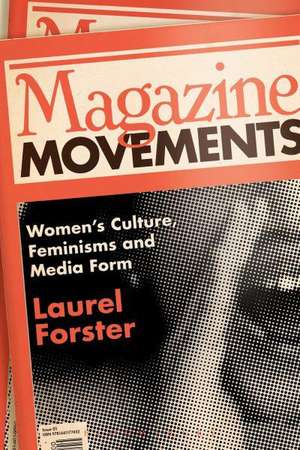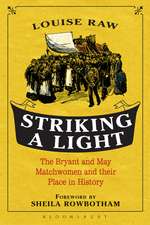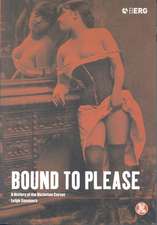Magazine Movements: Women's Culture, Feminisms and Media Form
Autor Dr. Laurel Forsteren Limba Engleză Paperback – 22 apr 2015
| Toate formatele și edițiile | Preț | Express |
|---|---|---|
| Paperback (1) | 239.77 lei 6-8 săpt. | |
| Bloomsbury Publishing – 22 apr 2015 | 239.77 lei 6-8 săpt. | |
| Hardback (1) | 716.56 lei 6-8 săpt. | |
| Bloomsbury Publishing – 22 apr 2015 | 716.56 lei 6-8 săpt. |
Preț: 239.77 lei
Preț vechi: 274.53 lei
-13% Nou
Puncte Express: 360
Preț estimativ în valută:
45.89€ • 49.87$ • 38.58£
45.89€ • 49.87$ • 38.58£
Carte tipărită la comandă
Livrare economică 21 aprilie-05 mai
Preluare comenzi: 021 569.72.76
Specificații
ISBN-13: 9781441177452
ISBN-10: 1441177450
Pagini: 304
Ilustrații: 37 bw illus
Dimensiuni: 152 x 229 x 20 mm
Greutate: 0.46 kg
Editura: Bloomsbury Publishing
Colecția Bloomsbury Academic
Locul publicării:New York, United States
ISBN-10: 1441177450
Pagini: 304
Ilustrații: 37 bw illus
Dimensiuni: 152 x 229 x 20 mm
Greutate: 0.46 kg
Editura: Bloomsbury Publishing
Colecția Bloomsbury Academic
Locul publicării:New York, United States
Caracteristici
Discusses a wide range of magazines and formats, such as the Cooperative Correspondence Club, Housewife, Woman's Hour, Arena 3, Shrew, Mukti and the f-word
Notă biografică
Laurel Forster is Senior Lecturer in Media Studies at the University of Portsmouth, UK. Her research interests and her range of publications contextualize the portrayal of women and women's cultures in magazines, women's writing and on television.
Cuprins
IntroductionChapter 1: Writing Friendship and Support in CCCChapter 2: Refashioning Femininity in Wartime HousewifeChapter 3: Linking Private and Public Over the Airwaves in Woman's HourChapter 4: Exploring Sexuality in Arena 3Chapter 5: Politicising the Personal in ShrewChapter 6: Networking the Magazine Format in HousepartyChapter 7: Mukti: A Magazine 'Against Oppression as Women, Black People, and Workers'Chapter 8: Feminism on the Internet in the f-wordBibliographyIndex
Recenzii
Ever since the publication of Betty Friedan's The Feminine Mystique in 1963, academic studies have sought to gauge the extent to which mass-market commercial magazines directed toward female readers in the US and UK have either contributed to gender stereotyping or offered arenas in which women could contest stifling gender roles. Forster (media studies, Univ. of Portsmouth, UK) makes a solid, important contribution to this ongoing debate by investigating a group of British "magazines" published from the mid-20th century to the present that have been almost entirely overlooked by scholars. These include not only print magazines-Arena Three (1964-71), the first openly lesbian magazine in Britain; Mukti (1983-87), aimed at South Asian women; and a number of overtly feminist magazines-but also the television magazine Houseparty (1972-81) and various radio magazines. The most fascinating chapter examines the history and significance of the Cooperative Correspondence Club (1935-90), a small group of women with diverse geographic, religious, and class affiliation, which twice monthly hand-produced a copy of a magazine, comprising individual women's letters, that circulated among the group's members. Forster's extensive archival research, incisive analysis, and jargon-free writing makes this book a pleasurable as well as an educational experience. Summing Up: Highly recommended. Lower-division undergraduates through faculty.
An enjoyable read.
Magazine Movements significantly broadens and deepens the historical treatment of women's magazines, and refuses easy generalisation about their meaning and role. Juxtaposing experimental, political and niche-audience titles to mainstream commercial products enables Forster to trace an inclusive, provocative history of British feminism across the second half of the twentieth century. Her innovative discussion of magazine formats, spanning print and broadcast media, charts the persistence and influence of the magazine genre for both commercial and counter-cultural negotiations of gender, race, sexuality and modernity. This is an authoritative and critical media history that makes important contributions to understanding women's lives and political engagement.
Laurel Forster's wide-ranging and thought-provoking case studies remind us that the 'magazine' format has not been confined to print. She reveals how the magazine has proven to be a highly adaptable mode for communicating and interacting with a range of audiences.
An enjoyable read.
Magazine Movements significantly broadens and deepens the historical treatment of women's magazines, and refuses easy generalisation about their meaning and role. Juxtaposing experimental, political and niche-audience titles to mainstream commercial products enables Forster to trace an inclusive, provocative history of British feminism across the second half of the twentieth century. Her innovative discussion of magazine formats, spanning print and broadcast media, charts the persistence and influence of the magazine genre for both commercial and counter-cultural negotiations of gender, race, sexuality and modernity. This is an authoritative and critical media history that makes important contributions to understanding women's lives and political engagement.
Laurel Forster's wide-ranging and thought-provoking case studies remind us that the 'magazine' format has not been confined to print. She reveals how the magazine has proven to be a highly adaptable mode for communicating and interacting with a range of audiences.














